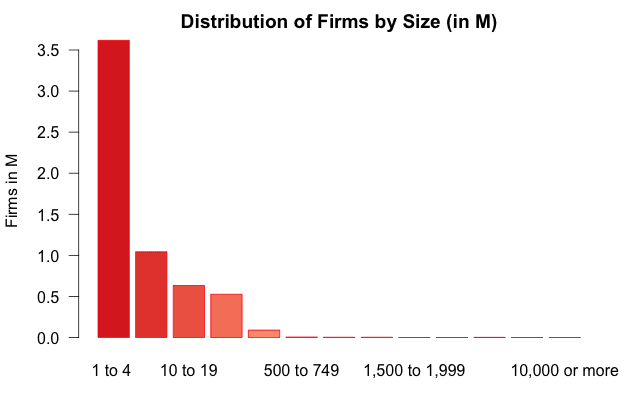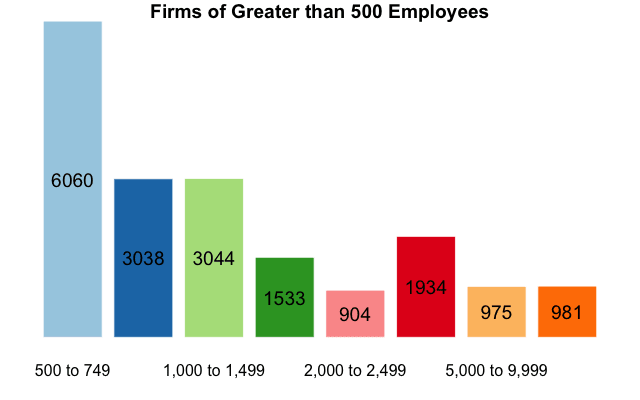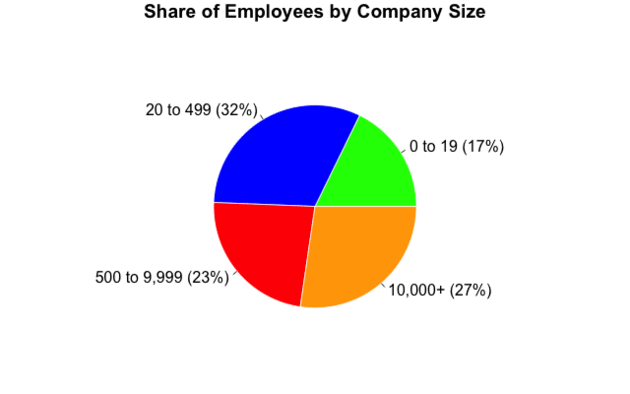3 minute read / Aug 20, 2012 /
Segmenting the SaaS Market for Sales
Developing a sales strategy is critical for software-as-a-service (SaaS) startups. The first step in developing a sales strategy is to build a robust market segmentation. I’ve used data from the US Census to develop a segmentation that reveals some surprising facts about the SMB market and may help inform your startup’s sales strategy.
Chart 1: 98% of businesses in the US employ fewer than 100 people.
98% of businesses in the US employ between 1 to 4 people. This large segment of businesses provides ample testing ground for product development, market fit validation and creation of word-of-mouth marketing.
Chart 2 : Only 1,000 companies employ greater than 10,000 employees and 12,409 employ greater than 500 employees.
Compared to the small business part of the market, there are far fewer potential customers - only about 12,500.
Charts 3 & 4: The 4 market segments by revenue
Ultimately, the number of firms in a given segment shouldn’t dictate sales strategy. Instead, the total number of employees within a segment (avg. employment per firm x number of firms) determines the revenue potential by segment.
For example, there are more employees working for companies from 20 to 500 people, about 39M, than there are working for companies with greater than 10,000 employees, about 33M. In this case, the smaller business represents a larger revenue opportunity.
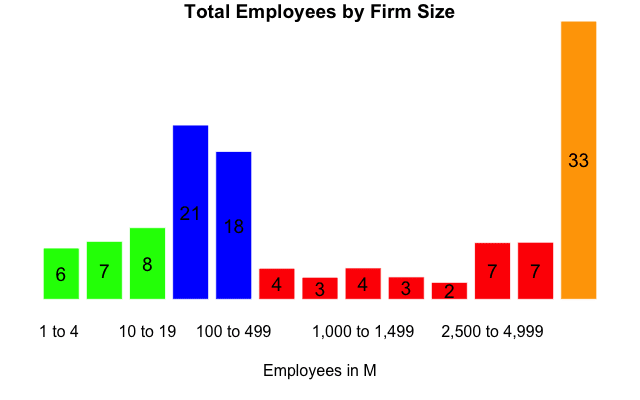Accounting for number of firms and total employment, I have divided the market into 4 segments, each demarcated by a different color, below. While the 20 to 500 person company and the 5000+ employee company segments represent the two largest segments by revenue opportunity, each of the four segments is roughly equal in size, about one quarter of the 121M US workers.
Payroll Segmentation
@aloo pointed out to me that it may not be fair to look at all seats carry equal revenue opportunity. To get a better sense of potential seat value, I used average payroll by company size as a proxy for per seat IT expenses. The chart is below and doesn’t differ dramatically from the previous chart.
The 10k+ employee category grows a few percentage points at the expense of the others. The average 10k+ employee company pays their staff about 40% more than a 1 to 10 person company and the effect is borne out in the data.
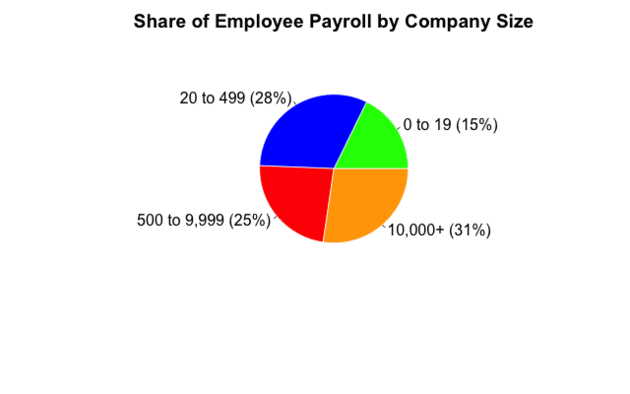
No matter the segment you may choose to target, understanding the customer base is the critical first step to devising a successful product, sales and marketing strategy.
